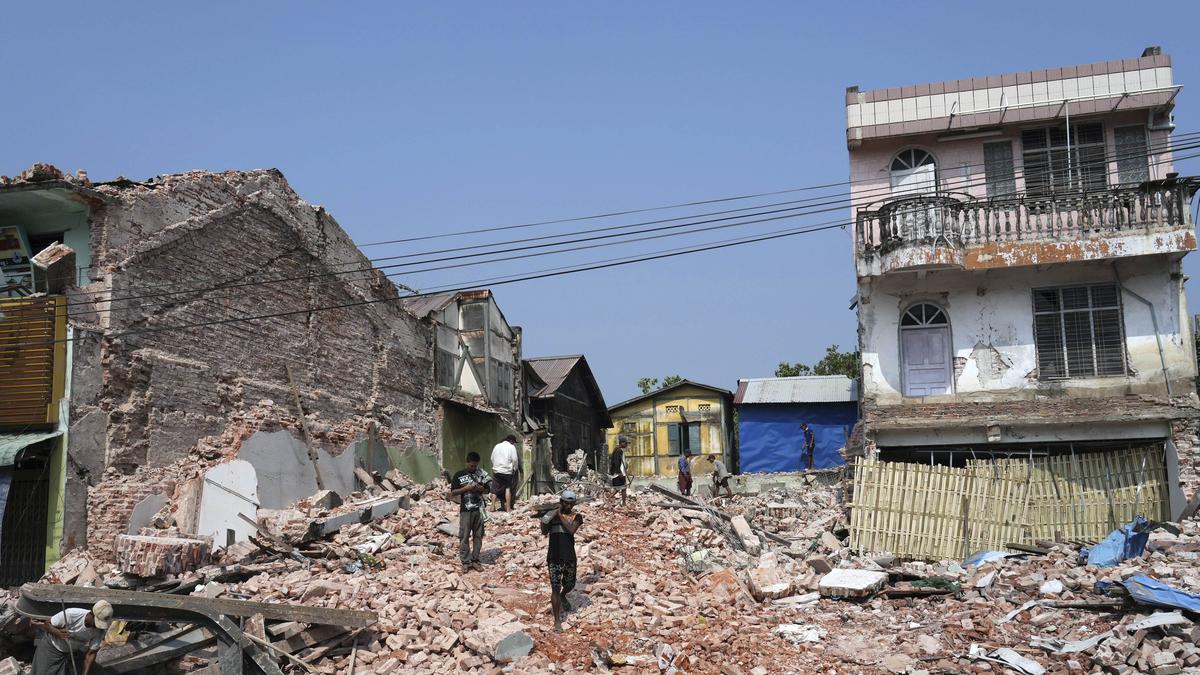The tremors that were felt in Delhi on July 10, 2025, at 9.04 a.m. with a magnitude of 4.4 on the Richter Scale — as reported by the National Center for Seismology (NCS) — are a wake-up call for India’s seismic vulnerability. The epicentre, which was located approximately 20 kilometres southwest of the city at a shallow depth of five kilometres, did not cause significant damage but but exposed the fragility of the capital’s infrastructure, where over 80% of buildings, especially those pre-dating the year 2000, fail to comply with seismic codes.
The July event follows a series of earthquakes across Asia since March 2025, including the devastating quake in Myanmar and Thailand (magnitude 7.7), tremors in Tibet and Greece, and recurring seismic activity along the India-Myanmar border. As India sits on one of the world’s most tectonically active plates, the urgency to build seismic resilience has never been greater.
The danger of unpreparedness
India’s seismic risk is rooted in the northward drift of the Indian Plate, colliding with the Eurasian Plate at 4 centimetres to 5 cm a year, shaping the Himalayas, which is a region overdue for a “Great Himalayan Earthquake” of magnitude 8 or higher, potentially impacting over 300 million people across northern India, Nepal, and Bhutan. Delhi, which lies in Seismic Zone IV (high risk), with a peak ground acceleration (PGA) factor of 0.24g, lies perilously close to this tectonic frontier.
The tremors felt in July, though moderate, highlighted the risk to the city’s estimated 33.5 million residents and over 5,000 high-rises, many built without adhering to the Bureau of Indian Standards’ IS 1893:2016 Code, which mandates ductile detailing and shear walls. Historical events such as the Bhuj earthquake of 2001 (7.7 magnitude, 20,000-plus deaths) and the Nepal quake of 2015 (7.8 magnitude) underscore the catastrophic potential of unpreparedness.
Beyond Delhi, India’s seismic zones, which range from Zone II to V, span a vast vulnerable area. The northeast, including Manipur, Nagaland, and Mizoram in Zone V (very high risk, PGA 0.36g+), has felt the ripple effects of seismic activity in Myanmar, notably the 7.7 magnitude Mandalay quake on March 28, 2025, and a 5.2 magnitude event on May 17, 2025. The Andaman and Nicobar Islands, also in Seismic Zone V, remain prone to tsunamis following subduction zone activity, as seen in 2004. The 5.7 magnitude Tibetan quake on May 12, 2025, caused tremors in Sikkim, reinforcing the restlessness in the Himalayan belt. Even distant events, such as the quake of magnitude of 6.2 in Greece on May 22, 2025, reflect a global pattern of tectonic unrest, though their direct impact on India is minimal.
Greater danger with urbanisation
Delhi’s rapid urbanisation exacerbates the risk it faces. Older structures in East Delhi, built on liquefaction-prone soils, and poorly designed high-rises pose a threat during strong quake shaking. The NCS’s real-time monitoring using the IndiaQuake app offers early warnings, but enforcement and public awareness lag behind. Compare this to Bangkok, where updated seismic codes since 2007 mitigated damage despite a flat-slab collapse in 2025, or Myanmar, where unenforced codes worsened the quake toll in 2025. India must bridge this enforcement gap to protect its cities.
The global seismic context heightens the urgency. The Greece earthquake, though 5,000 km away, is part of a series of tremors since March, including those in Indonesia, the Chile-Argentina border, and Ecuador on May 3, 2025. While these do not directly trigger Indian quakes, they signal a dynamic earth, pointing to the need for preparedness. The Himalayan seismic gap, where strain has built since the quake in Kangra (1905) and the ‘Gorkha quake’ (Nepal, 2015), are a ticking clock, with a major event potentially devastating Delhi and beyond.
To counter this, India must enforce seismic codes rigorously. In Delhi, retrofitting older buildings with steel jacketing and mandating deep pile foundations in vulnerable areas can enhance stability. Guwahati, in Zone V, needs strict IS 1893:2016 compliance, avoiding Brahmaputra floodplain construction to prevent liquefaction, and adopting base isolation for critical infrastructure. Bhuj requires expanded retrofitting and community disaster response teams. The Delhi Development Authority should accelerate compliance checks, while the NCS expands early warning systems to rural Zone V areas.
Global lessons
The international lessons are instructive. Bangkok’s use of high-strength concrete (30MPa-40 MPa) and ductile detailing offers a model, though its lower seismic risk (0.1g-0.2g) differs from India’s Zone V challenges. The damage seen in Myanmar due to unreinforced masonry is a warning about neglect — a risk India must avoid. Tailored solutions — accounting for the Northeast’s soft soils and Kutch’s sandy basins — require annual retrofitting investments of ₹50,000 crore, as estimated by experts.
With seismic activity intensifying regionally and globally, India cannot afford delay. The Government of India must lead with stringent enforcement, public education, and resilient infrastructure investment. Citizens should educate themselves about the need for emergency kits, safe building practices, and evacuation plans. The Bhuj disaster, where unpreparedness amplified casualties, remains a haunting lesson. As tremors punctuate India’s seismic landscape, building resilience is a technical and moral duty in order to protect lives and livelihoods.
There needs to be a national dialogue urging action before the next major quake strikes. Delhi’s tremor echoes this urgency, demanding a transformation from vulnerability to strength.
Balasubramanian Govindasamy is a retired Chief Engineer and former Deputy Adviser, Ministry of Jal Shakti, Government of India. He has been a central government team member to mitigate the drinking water problem in the wake of natural calamities across India
Published – July 17, 2025 12:08 am IST
